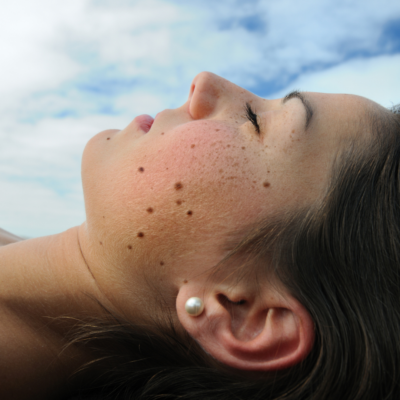Alopecia
Alopecia is the clinical name for hair loss or balding. It’s an umbrella term for many types of hair loss. But no matter what type, losing hair can be distressing in a culture that prizes a full head of hair as a signifier of youthfulness, vitality and attractiveness.
Here at California Skin Institute, our board-certified dermatologists understand hair and scalp disorders and can identify the type of hair loss, its cause and the best way to treat it.
Different Types of Alopecia
Although there are many types of alopecia, they fall into two main categories: scarring and non-scarring. Non-scarring responds best to treatment because the hair follicles on the scalp are more likely to still be viable. These include more common types of hair loss:
- Androgenetic Alopecia is the most prevalent type of hair loss, affecting more than 50 million men and 30 million women in the United States. Commonly known as male pattern hair loss or female pattern hair loss, androgenetic alopecia is hereditary but can be managed with medication or surgery.
- Anagen Effluvium is sudden hair loss caused by medical treatment, such as chemotherapy. When chemotherapy stops, hair usually grows back. Dermatologists can prescribe medication to help it grow back more quickly.
- Alopecia Areata is an autoimmune disease. In autoimmune diseases, the body’s immune system attacks healthy tissues. In this case — hair follicles. This causes hair to fall out and prevents new hair from growing. It can occur suddenly with hair falling out in different places on the scalp. Hair in other areas, including the brows and lashes, may also fall out. Dermatologists treat alopecia areata with medication that can help hair regrow.
- Traction Alopecia can result from pulling the hair tightly into a bun, braids, or ponytail, causing hair breakage and loss. Weaves, extensions, hair rollers and perms can also contribute. Easing up can help but it’s important to see a board-certified dermatologist to rule out other possible causes of hair loss.
- Central Centrifugal Cicatricial Alopecia is similarly caused by detrimental hair care choices. Here, the suspects may be products and styling tools such as hair dyes, perms, hair gels, pomades, curling irons, straighteners and blow dryers that damage the hair follicles. Your California Skin Institute specialist can determine the cause and suggest alternatives, as well as ways to repair the damage.
Relatively rare conditions often with redness, swelling and lesions can result in scarring alopecia. These require treatment with medication prescribed by a dermatologist.
Alopecia Treatments
California Skin Institute practitioners are able to offer many treatment options to our patients and are experts in finding the best treatment for each patient’s type of alopecia. Our experts are highly skilled in administering platelet-rich plasma, known as PRP hair growth treatment to regrow hair using the body’s own growth factors, and in helping patients choose the most effective shampoos and topical treatments for thinning hair and/or prescribing oral medication and higher strength topicals if warranted.
If you’d like to speak with an expert about halting and possibly reversing your hair loss, schedule a consultation today.
Disclaimer
This is to be only used as an educational piece and individuals should not use it to self-diagnose a skin condition or problem.
Treatments for Alopecia




 / 291 Reviews
/ 291 Reviews